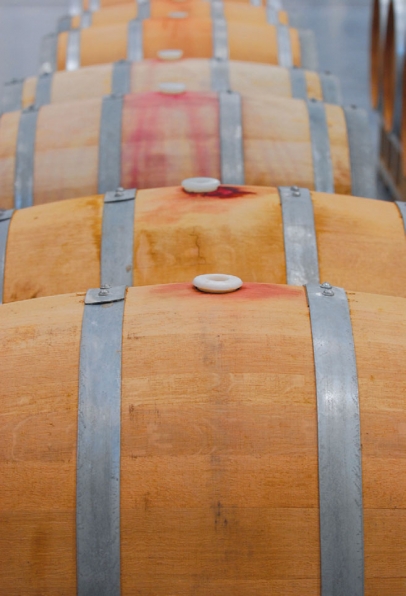Chill with a Rosé from Texas Soil
Rosé wines are a strong category for Texas winemakers. Most recently Becker Vineyards won Best Rosé at the San Francisco Wine Competition for their 2013 Provencal Mourvèdre “Tallent Vineyards” Rosé. Texas winemakers continue to claim prizes for their award winning wines made from the more heat tolerant grapes of southern France, Spain and Italy in competitions around the world. These warmer region grapes, such as Grenache, Mourvèdre and Tempranillo, tend to thrive more in our climate than the Bordelaise varieties so prevalent in California.
In the past, much of the Texas rosé in the market leaned toward off-dry if not downright sweet. There has been a shift in style for some winemakers as many are now making dry versions, which tend to be more food friendly. Most of the 2014 rosé vintage was bottled in February and is now available in markets, at wineries or through winery websites.
I am often asked if rosé wine is made by blending white wine and red wine together. This is not usually true though there are exceptions. Most rosé wine made in the world is produced by the Saignee method. This means that its production starts just like the production of any red wine: The juice gains its color from macerating with the grape skins, it is then drained (bled off) after gaining some color; a shorter time on the skins will result in a lighter wine while the red wine that remains in the vats is intensified as a result of the bleeding. Rosé is typically fermented in stainless steel or old oak vats, which eliminates the expense of new oak barrels. Due to this production method, rosé is often very wallet friendly. It is produced more quickly than red wine and most producers intend for these wines to be consumed young, which eliminates storage costs for aging.
My top Texas rosé this spring has been the 2013 McPherson “Les Copains” Dry Texas Rosé, a blend of 55% Cinsault, 30% Mourvèdre and 15% Viognier. It has aromas and flavors of raspberry and grapefruit with a touch of dried herbs. It is dry with a medium body, fresh acidity and a long fruity finish. This is the perfect wine to accompany a goat cheese salad, for instance, out on the patio and it is readily available at Spec’s as is the above offering from Becker Vineyards. In addition to these two rosé wines, look for the new releases from some of the participating wineries at The Woodlands Wine and Food Week such as Brennan’s new Mourvèdre Dry Rosé, Pedernales Texas Dry Rosé, which is a blend made from Grenache, Mourvèdre and Tempranillo, as well as two from Duchman, one made from Sangiovese and another from Montepulciano grapes.
Be aware that many winemakers make wine from grapes or juice that was brought into our state from elsewhere; they do this for a variety of reasons. Make sure that you are getting a true taste of the Texas terroir. Check the label. For the wine to bear the name Texas in the designation, it must contain a minimum of 75% Texas-grown grapes. It may be labeled “Texas” with the grapes coming from different areas around the state or it may be more specific with a more defined area appellation name like the “Texas High Plains.” The label may also specify a named vineyard area or a county; this information lets you know exactly what part of the Texas terroir you are tasting.
Dry Texas rosé is the perfect drink with which to start up a new Texas wine adventure this season. Chill it down and enjoy its versatile pairing potential all summer long. It is a fantastic choice alongside our Gulf seafood as well as with hard to pair Tex-Mex favorites; incorporate some local goat cheese into your dish and you’ll discover a Texas pairing nirvana.





